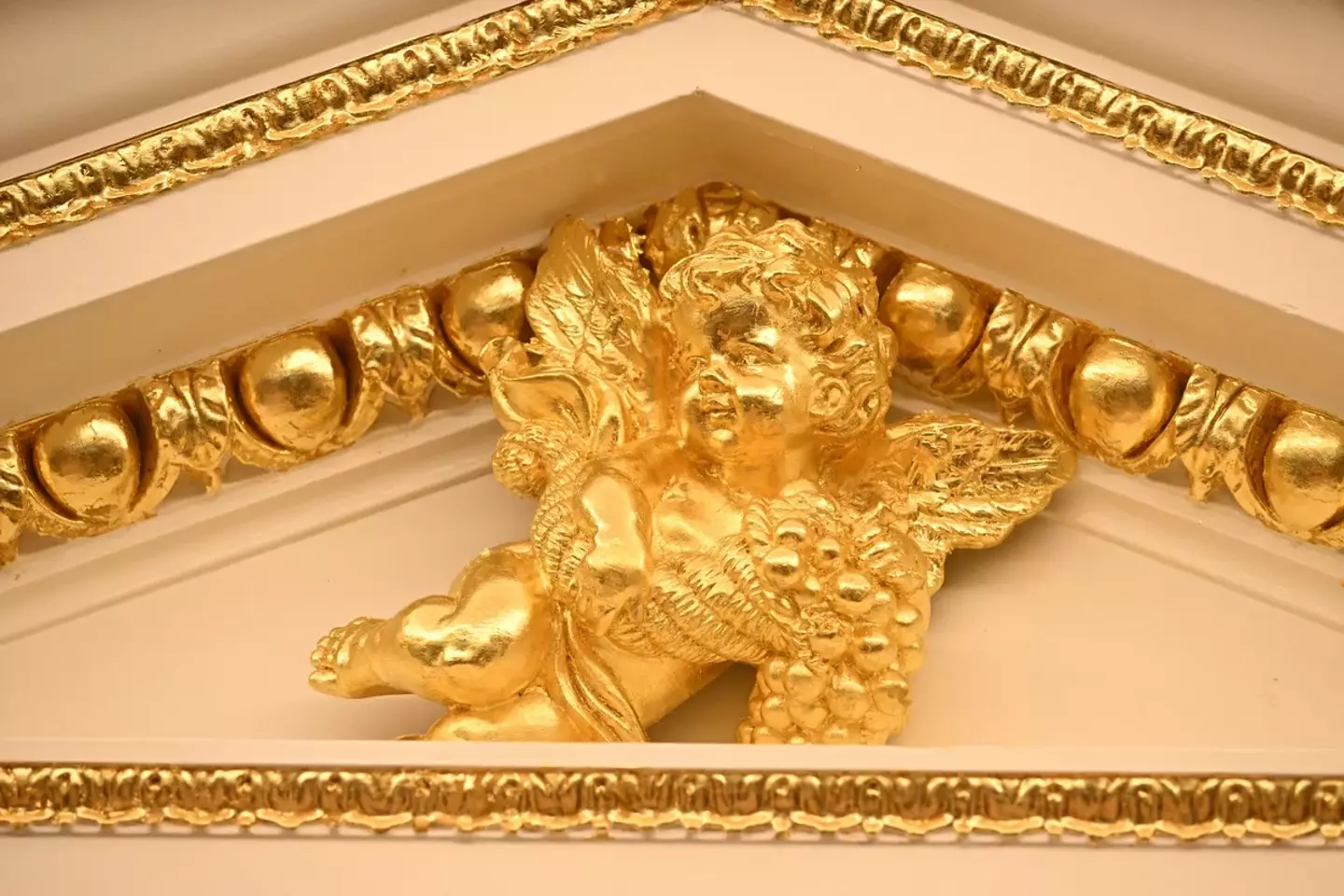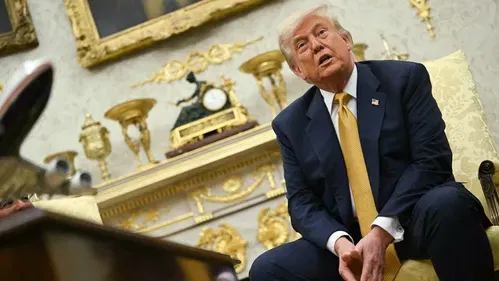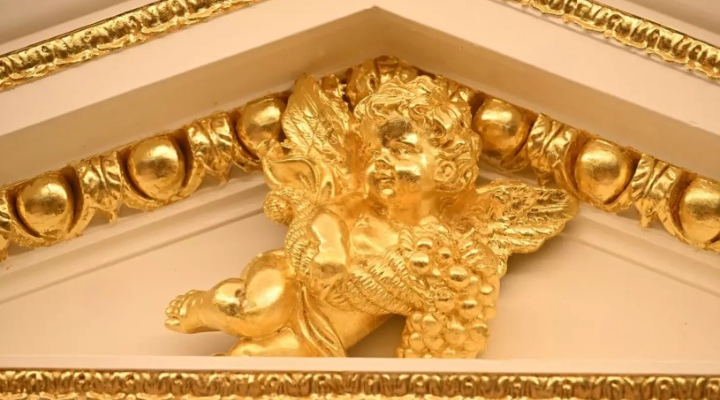According to the announcement, while the White House is recognized as one of the most beautiful and historic buildings globally, it currently faces limitations when hosting major events for world leaders. To accommodate such functions, a large temporary tent — positioned about 100 yards from the main entrance — often has to be installed.
According to CNN, the recent decorative changes at the White House came just weeks after former President Donald Trump reportedly began adding multiple gold accents to various areas of the property — including small gold cherub designs placed above the Oval Office entryway.
Journalist Kevin Liptak explained in an Instagram video that many of the finishes appear similar to those found in Trump’s private clubs, with some decorative details even imported from his Mar-a-Lago estate.
Following the announcement, some commentators questioned whether the upgrades signaled long-term plans for his presence at the White House, while others expressed concern about the cost.
On social media platform X (formerly Twitter), one user remarked that the focus on decorative gold elements came at the same time as budget reductions in other federal programs.

Some social media users voiced strong criticism regarding the reported gold-themed renovations at the White House. One commenter questioned how such expenses could be justified in light of recent budget reductions in areas such as medical research and nutritional assistance programs, urging for a clearer explanation of the spending priorities.
Another user expressed disbelief, comparing the lavish décor to the styles of foreign leaders known for highly ornate residences, and highlighting concerns about changes to programs that provide meals and healthcare support to children.
Others summarized their frustration by referencing both the reported remodeling of the Oval Office with gold accents and the construction of a $200 million ballroom, noting the timing alongside federal program cuts.
One additional comment stressed that, regardless of political affiliation, the idea of excessive gold decoration in the White House felt contrary to traditional American values, stating that the United States historically avoids designs reminiscent of palaces or monarchies.

Another social media commenter questioned the priorities behind the renovations, writing:
“Are you comfortable with President Trump spending $200,000,000 on a gold-plated ballroom at the White House while also reducing access to school meals for millions of underprivileged children and scaling back Medicaid for low-income Americans?”
These concerns gained momentum after a report from CNBC highlighted growing unease over budgetary trade-offs in the administration’s latest spending package. This legislative initiative, often referred to by members of the administration as the “big, beautiful” reconciliation plan, was revealed to include substantial funding cuts to the Supplemental Nutrition Assistance Program (SNAP).
For many households, SNAP is not just an additional resource but a vital lifeline that ensures consistent access to food. The program currently supports millions of Americans, from single parents struggling to make ends meet to senior citizens on fixed incomes. However, under the revised budget, an estimated 22.3 million families will either lose their benefits entirely or see a significant reduction in their monthly assistance.
According to The New York Times, this change would represent the most sweeping reduction to the SNAP program since its inception in 1939 during the Great Depression. At that time, the program was designed to address widespread hunger and stabilize agricultural markets, becoming one of the cornerstones of American social welfare policy. Critics of the recent cuts argue that dismantling such a program, particularly in a period of economic uncertainty, risks pushing vulnerable populations further into hardship.
Supporters of the administration, however, contend that the adjustments are necessary to reallocate funds toward what they see as essential infrastructure improvements and ceremonial functions at the nation’s most recognized residence. They argue that upgrading the White House to better host visiting dignitaries, leaders, and major international events will strengthen America’s image on the global stage.
Still, the optics of spending hundreds of millions of dollars on ornate renovations—especially those featuring gold-plated fixtures—while reducing funding for basic nutritional programs has proven to be a politically sensitive issue. Public debate has since spilled over into televised discussions, opinion columns, and community forums, making it clear that this is not simply a matter of architecture and design, but a deeper conversation about the nation’s spending priorities and values.



